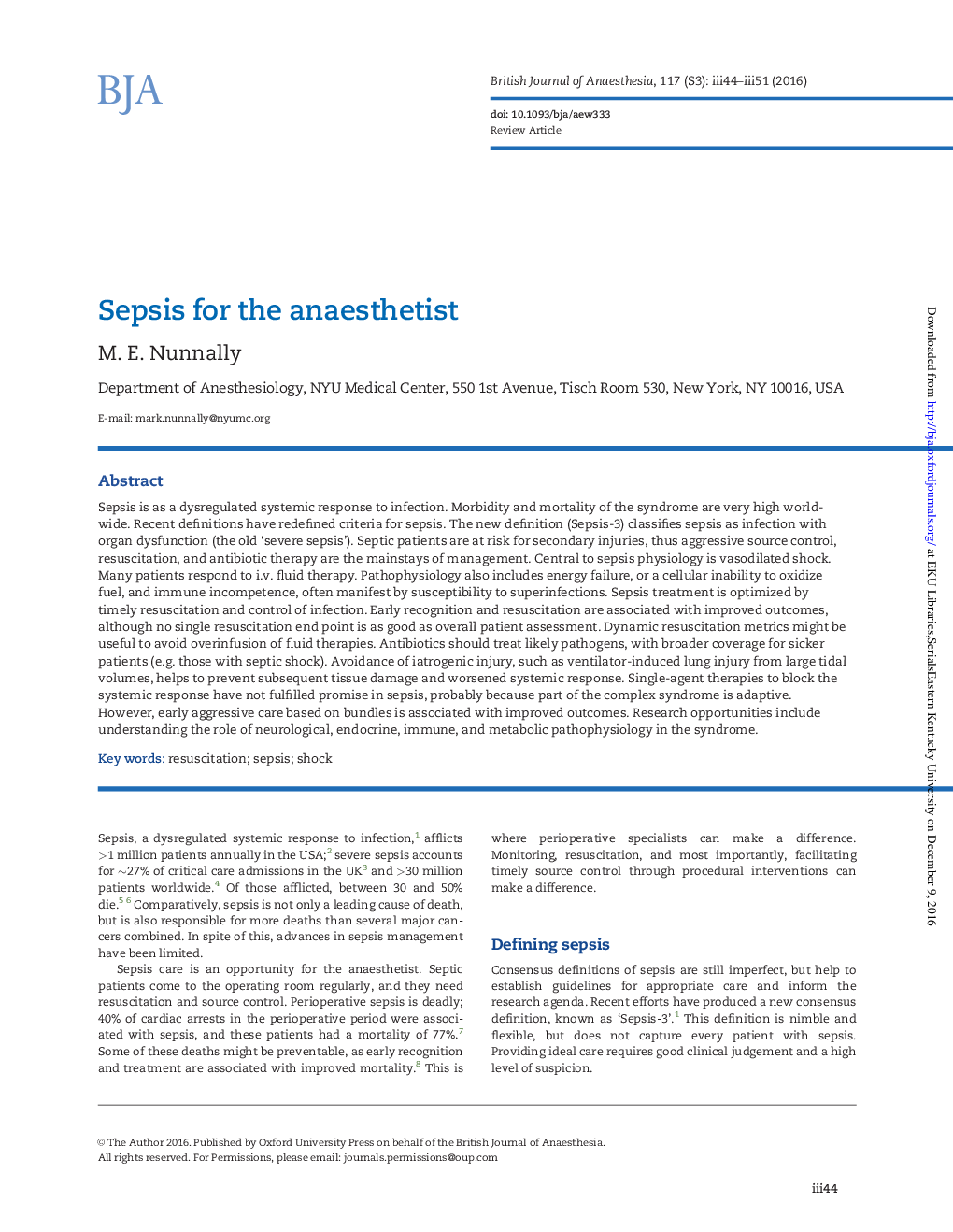| Article ID | Journal | Published Year | Pages | File Type |
|---|---|---|---|---|
| 8930804 | British Journal of Anaesthesia | 2016 | 8 Pages |
Abstract
Sepsis is as a dysregulated systemic response to infection. Morbidity and mortality of the syndrome are very high worldwide. Recent definitions have redefined criteria for sepsis. The new definition (Sepsis-3) classifies sepsis as infection with organ dysfunction (the old 'severe sepsis'). Septic patients are at risk for secondary injuries, thus aggressive source control, resuscitation, and antibiotic therapy are the mainstays of management. Central to sepsis physiology is vasodilated shock. Many patients respond to i.v. fluid therapy. Pathophysiology also includes energy failure, or a cellular inability to oxidize fuel, and immune incompetence, often manifest by susceptibility to superinfections. Sepsis treatment is optimized by timely resuscitation and control of infection. Early recognition and resuscitation are associated with improved outcomes, although no single resuscitation end point is as good as overall patient assessment. Dynamic resuscitation metrics might be useful to avoid overinfusion of fluid therapies. Antibiotics should treat likely pathogens, with broader coverage for sicker patients (e.g. those with septic shock). Avoidance of iatrogenic injury, such as ventilator-induced lung injury from large tidal volumes, helps to prevent subsequent tissue damage and worsened systemic response. Single-agent therapies to block the systemic response have not fulfilled promise in sepsis, probably because part of the complex syndrome is adaptive. However, early aggressive care based on bundles is associated with improved outcomes. Research opportunities include understanding the role of neurological, endocrine, immune, and metabolic pathophysiology in the syndrome.
Keywords
Related Topics
Health Sciences
Medicine and Dentistry
Anesthesiology and Pain Medicine
Authors
M.E. Nunnally,
